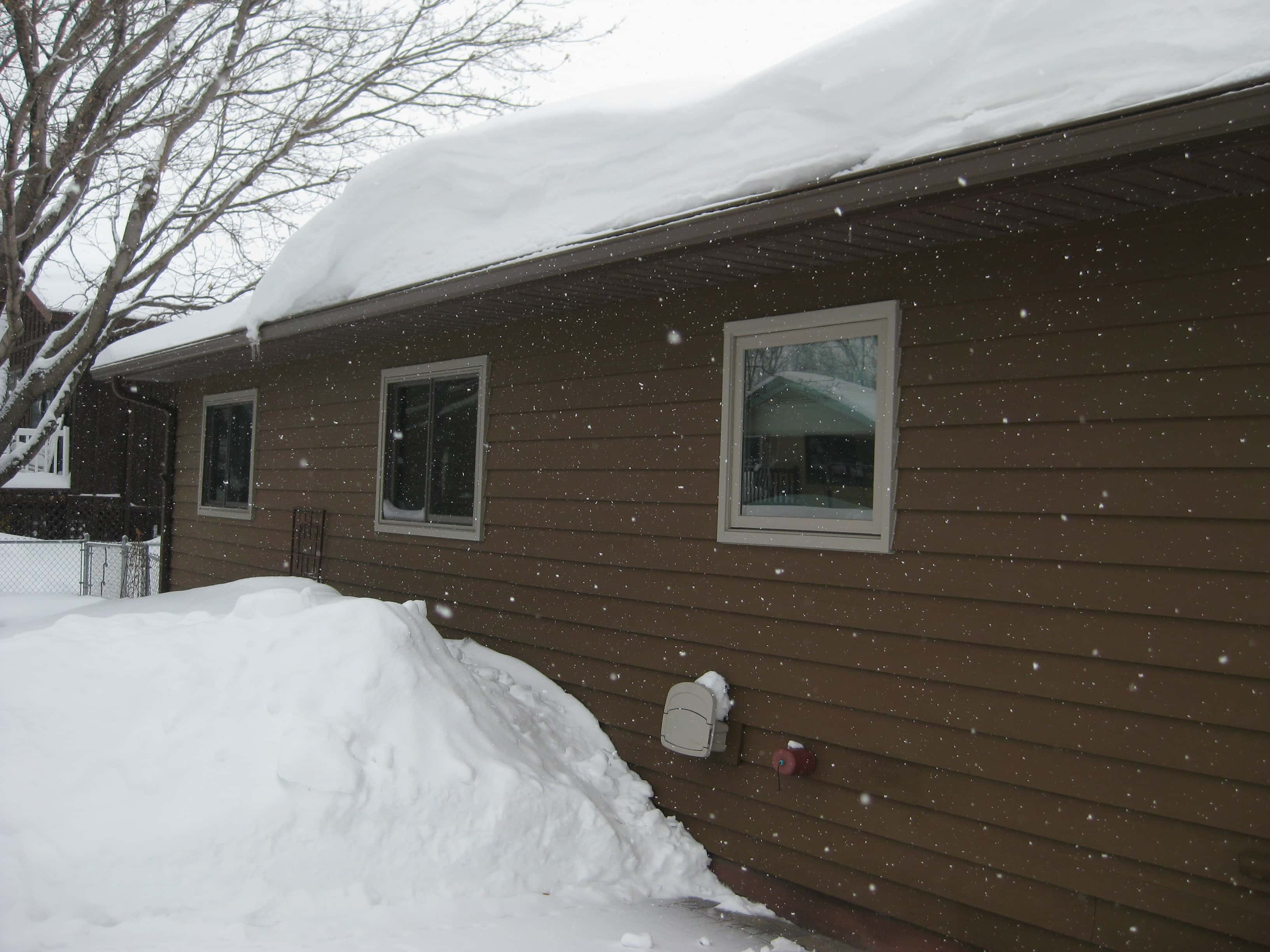
Content and image courtesy of NDSU Extension
This winter’s heavy snowfall has people wondering whether they need to remove snow from the roof of their house or agricultural building.
“Most roofs are designed to handle the snow load of a typical winter,” North Dakota State University Extension agricultural engineer Ken Hellevang says. “Just because one roof has gone down doesn’t mean every roof in the area is in danger. The collapse may have been a case of poor workmanship or design, unusual amounts of snow or some other special circumstance.”
Most house roofs in eastern and northern North Dakota should hold 30 to 40 pounds of snow per square foot, according to Hellevang. In the southwestern part of the state, where snowfall typically is lighter, roofs are built to hold less – about 30 pounds per square foot.
“Agricultural buildings usually aren’t designed to those same standards,” Hellevang says. “That’s because the risk of damage or injury from collapse is considered to be lower.”
Agricultural buildings should carry 20 to 35 pounds of snow per square foot, depending on location. However, agricultural buildings normally are not required to be built to carry a specified snow load and may have been built for a lighter amount of snow.
Also, snow load standards may not have been in place when older homes and buildings were erected, but if those buildings have withstood the test of time, they’ll probably withstand a normal winter’s snow load, Hellevang says.
Determining if the snow load on your roof is excessive can be difficult.
“The weight of snow varies greatly,” Hellevang says. “Light, fluffy snow may only weigh about 7 pounds per cubic foot. More average snow may weigh 15 pounds per cubic foot, and drifted, compacted snow may weigh 20 pounds or more. Ice buildup also adds weight rapidly.”
If the roof has more than a couple of feet of compacted snow on it, the load may be excessive, he adds.
He urges people to monitor the roof for deep drifts caused by surrounding buildings or trees. Roofs that have more than one level often accumulate deep snowdrifts, but those roofs should have been built to carry that added load.
Ultimately, however, the decision to shovel off a roof will be based on an educated guess unless you can get a recommendation from an engineer or building official, Hellevang says.
He recommends that home and agricultural building owners check their insurance policy because roof failure due to snow is not covered by all policies.
Those who decide to shovel off their roof need to remember that snow and ice can make the job dangerous. Agricultural buildings with metal roofs can be especially treacherous, and power lines can be an added hazard.
Ladders can slide easily on frozen ground, so they need to be anchored in some way.
Shoes also can slide easily on the ladder and the roof. Select footwear that provides a good grip in cold weather. People who are not agile and comfortable with working on the roof should hire someone to remove the snow.
“You also can damage your roof,” Hellevang says. “Cold temperatures make shingles brittle, so they break more easily. You’re also more likely to remove many of the little pebbles from the surface of the shingles, shortening the life of your roof.”
Hellevang advises using a roof rake, which allows a person to remove snow while standing on the ground.
Some snow rakes have rollers that keep the rake just above the shingle. If using a shovel, take care to not impact the shingles, and shovel down the roof in the direction the shingles lie.
